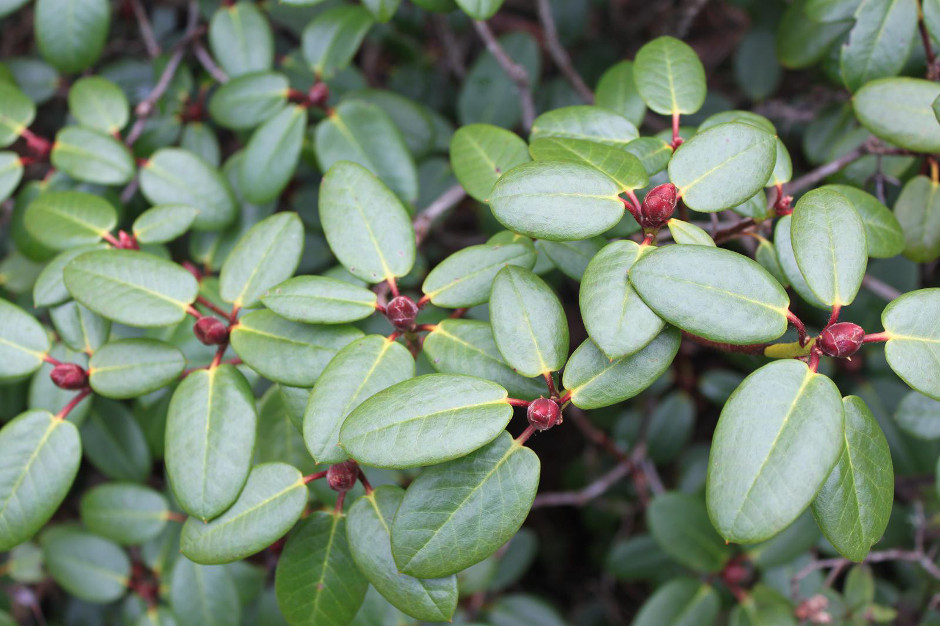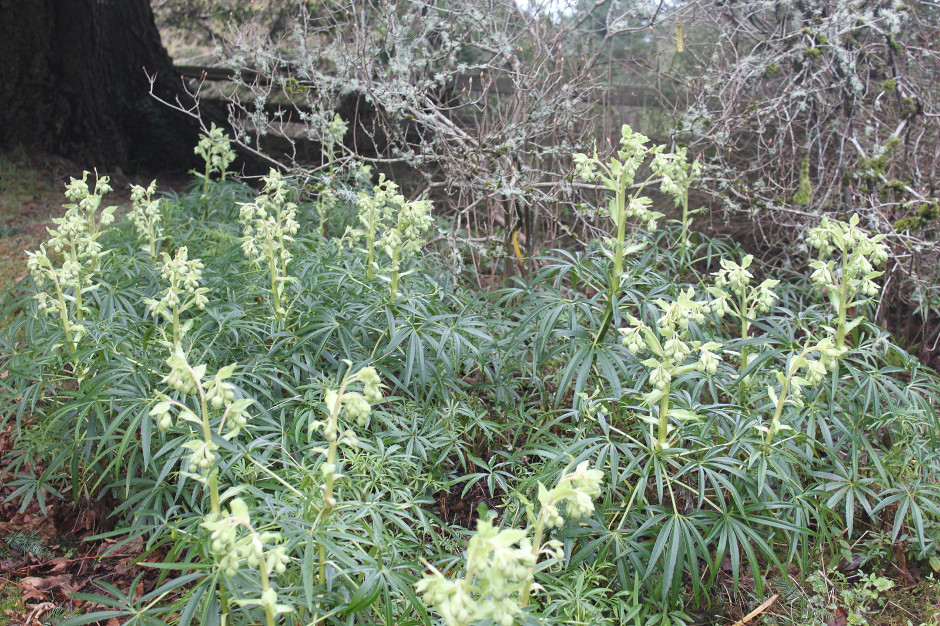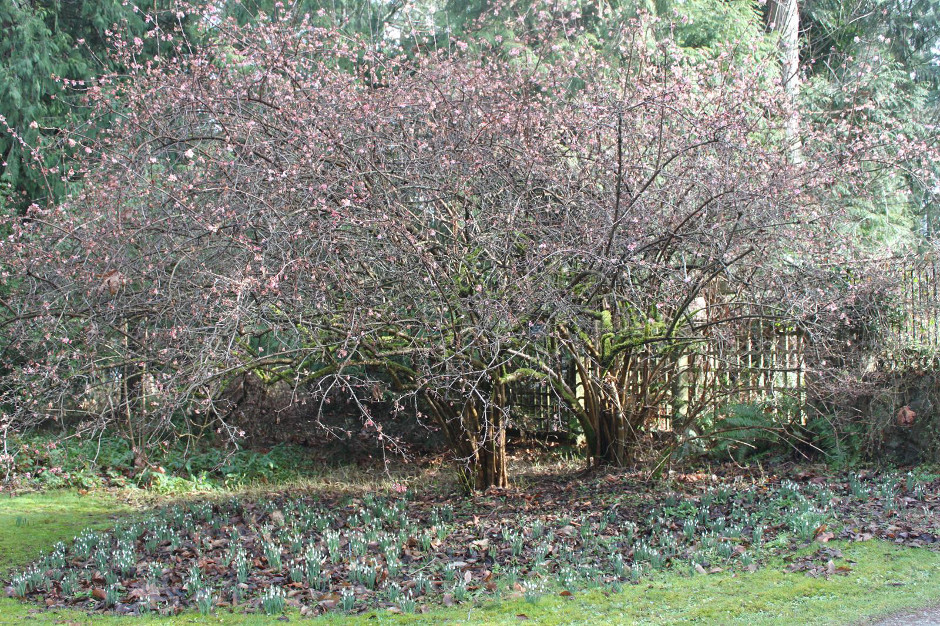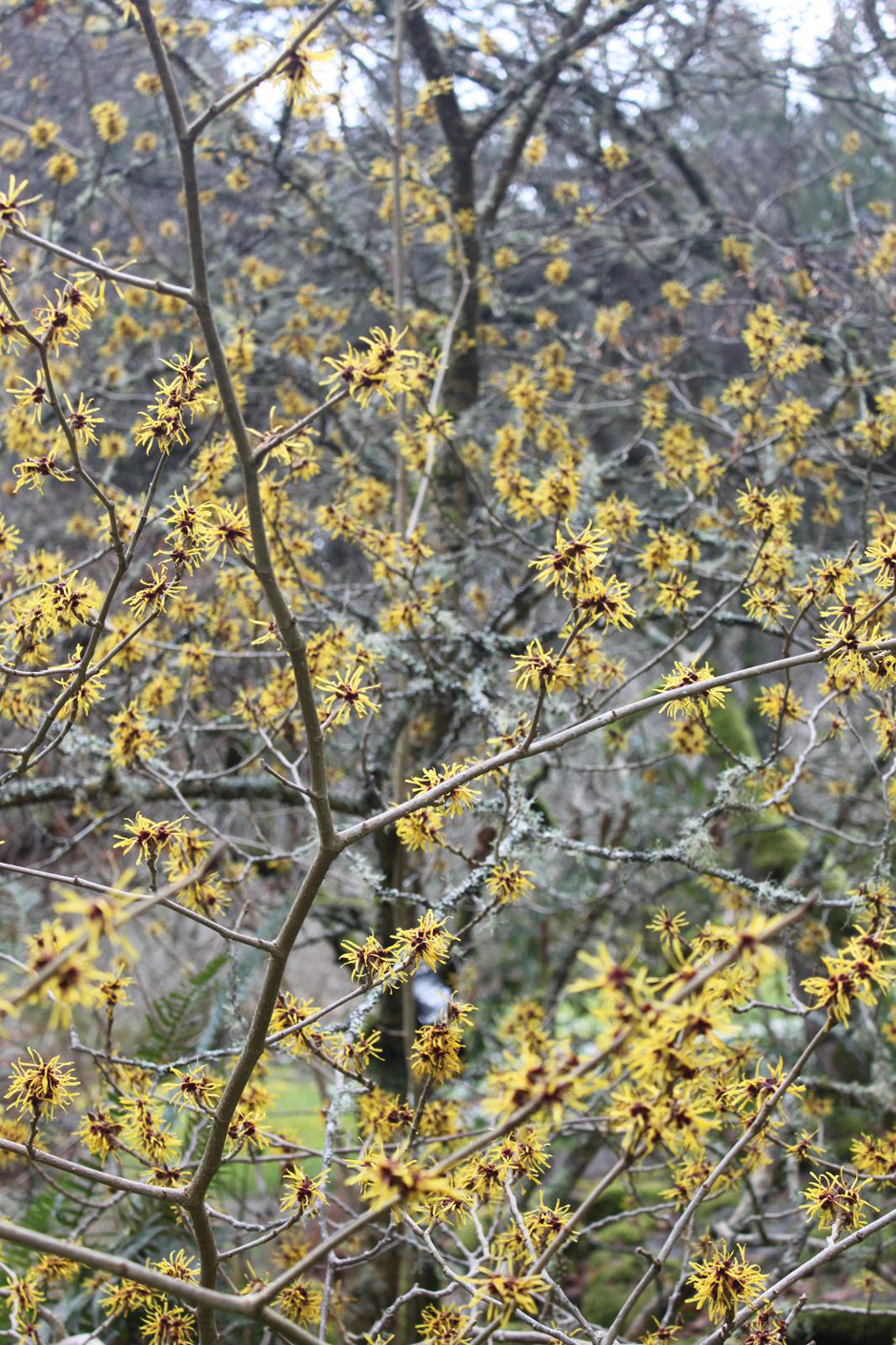Before the mercury dropped to three degrees today in mid-February, my daughter and I took up the Milner invitation to walk among the snowdrops in the garden. We were delightfully surprised, and found many brave winter bloomers to brighten up this dreary day. Below are some of the highlights of our walk.

Rhododendron ‘Hummingbird’ is a huge shrub at Milner, with many buds anxious to bloom very soon.

This patch of Eranthis hyemalis (Winter Aconite) has likely been spreading for decades - here under the deciduous trees at Milner. An extraordinary early bloomer, it quietly spreads and grows and mixes well with snowdrops. A member of the Ranunculaceae family, it can sometimes be confused with the perennial buttercup weed. So be careful when weeding at this time of year - this is a rare plant to treasure.

This clump of Helleborus foetidus is in full bloom right now and very healthy indeed. A reliable winter-blooming evergreen, H.foetidus produces many cymes of bell-shaped green flowers - stunning in a large grouping - and known to be deer resistant.

This very old and fragrant Virburnum farreri is covered with pink blossoms over a skirt of Galanthus nivalis(snowdrops) - happy to multiply under deciduous shrubs or trees. Sunlight pours in during late winter and then the deciduous leaves provide a cool and shady spot for snowdrops to sleep through the hot summer.

Beauty can be found almost anywhere in a garden - here moss cliging to the bare branches of Magnolia stellata, buds almost ready to burst forth once again.

This fine - and very old specimen of Hamamelis mollis (Witch Hazel) - is now a huge tree, absolutely covered with blossoms to brighten the gloom. If you don't have one in your garden, you are missing a winter delight. Most witch hazels available today are a cultivar of H. x intermedia - a cross between H. mollis and H. japonica. Two standouts are H. "Jelena" (copper-orange blossoms) and H. "Arnold Promise" (gold blossoms). As an added bonus, the fall colour of witch hazel is brilliant!

Mahonia with its sprays of usually fragrant yellow flowers is common in many gardens now - evergreen through winter and blooming very early. They can provide nectar for early bees that may be around.

Viburnum davidii has become so common that it is often passed over for more exotic cultivars. This fine specimen at Milner has metallic blue berries still clinging under the leaves at the same time as new blooms are getting ready to show off. I hope you enjoyed this winter walk through Milner Gardens. Text and photos by Linda Derkach




